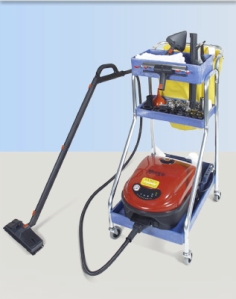Gregory Hanson (828) 237-1952
DryVaporCleaning.com
Click HERE for more information, or to get a FREE Estimate
What is TANCS®?
It’s Scientifically Proven; TANCS® disinfects with just water and heat!
A TANCS® equipped steam vapor system meets or exceeds the requirements necessary to kill or destroy a variety of pathogenic microbes as tested and certified by Nelson Laboratories, a nationally recognized testing Lab in Salt Lake City, Utah. The TANCS® component qualifies the LadyBug steam vapor systems as a disinfection device for the U.S. EPA. While chemical based disinfectants are tested on non-porous surfaces, the TANCS® system was tested on porous tiles more typical of surfaces encountered in normal cleaning situations.
With Thermo Accelerated Nano Crystal Sanitation (TANCS®), our proprietary technology uses the naturally occurring minerals in tap water to form crystals. As these crystals pass through the boiler they gain energy from the heat. Then, when the water transforms into super-heated low-moisture steam, these energized crystals are accelerated along with the steam. This process helps disrupt the cell membrane, allowing lethal temperatures to quickly destroy the germs. This activity is confined to the surface being treated or cleaned and is lethal for germs and yet safe for you! With the TANCS® option, the system qualifies as a disinfection device for the US EPA*, in addition to extending the life of the entire system.
This is not your grandmother’s clean—The case against bleach
- Carcinogenic
- Oxidizes metals and destroys stainless steel, degrades grout & concrete
- Ineffective if used on dirty surfaces
- Rapidly degrades in sunlight and hot water, losing effectiveness
- Most bleach products are not EPA-registered disinfectants
- Is suspected to cause problems with fertility for chemically-sensitive humans and pets
- Dangerous to human contact: eyes, skin, respiratory consequences
For years, bleach (sodium hypochlorite) has been mistakenly associated with an absolutely clean and disinfected surface. Today, scientists are becoming more aware of the limitations of chemical disinfectants and sanitizers. Recent studies investigating biofilms (microbe colonies present on many pieces of food processing equipment, for example) reveal that 60 minutes of exposure to bleach leaves as many live cells as dead cells in the biofilm matrix. This leads to rapid recolonization of the surface.
Studies show that sufficient heat as is present in the TANCS® steam vapor system will travel through the biofilm and kill the cells that are unreachable by the surface application of a germicide. All without degrading the surface you’re cleaning or impairing the air you’re breathing while you’re doing it!
Benefits of TANCS® technology
- Results are dramatic and virtually immediate.
- Because the process is so effective, results last longer between cleanings.
- Steam vapor reaches into microscopic pores where topical chemical applications and scrubbing would never reach.
- Savings in time and effort.
- Simplification of cleaning protocols— no disinfectant mixing, storage, disposal concerns, lengthy dwell time requirements, or confusing label directions.
- Elimination and control of the biofilms that resist typical disinfectants.
- Reduced chemical exposure risks.
- Destruction of embedded bacteria and germs that cause lingering odor with traditional cleaning methods.
- Minerals are utilized by TANCS® instead of building up on internal components. The resulting elimination of scale allows for an extended warranty on the steam boiler.
- Disinfecting powers reach far beyond what you can see.
- Add TANCS® to your dry steam vapor system and add five years to your boiler warranty!
TANCS® also prevents scale buildup in the boiler due to changes imparted to the minerals in the above process. No scaling maintains the heating efficiency within the boiler and extends the life of the system.
* Verified in tests by Salt Lake City UT-based Nelson Laboratories, a Nationally Recognized Test Lab (NRTL), EPA, FDA Registered and third party certified to ISO 9001:2000 and ISO/IEC 17025

Comments
Post a Comment